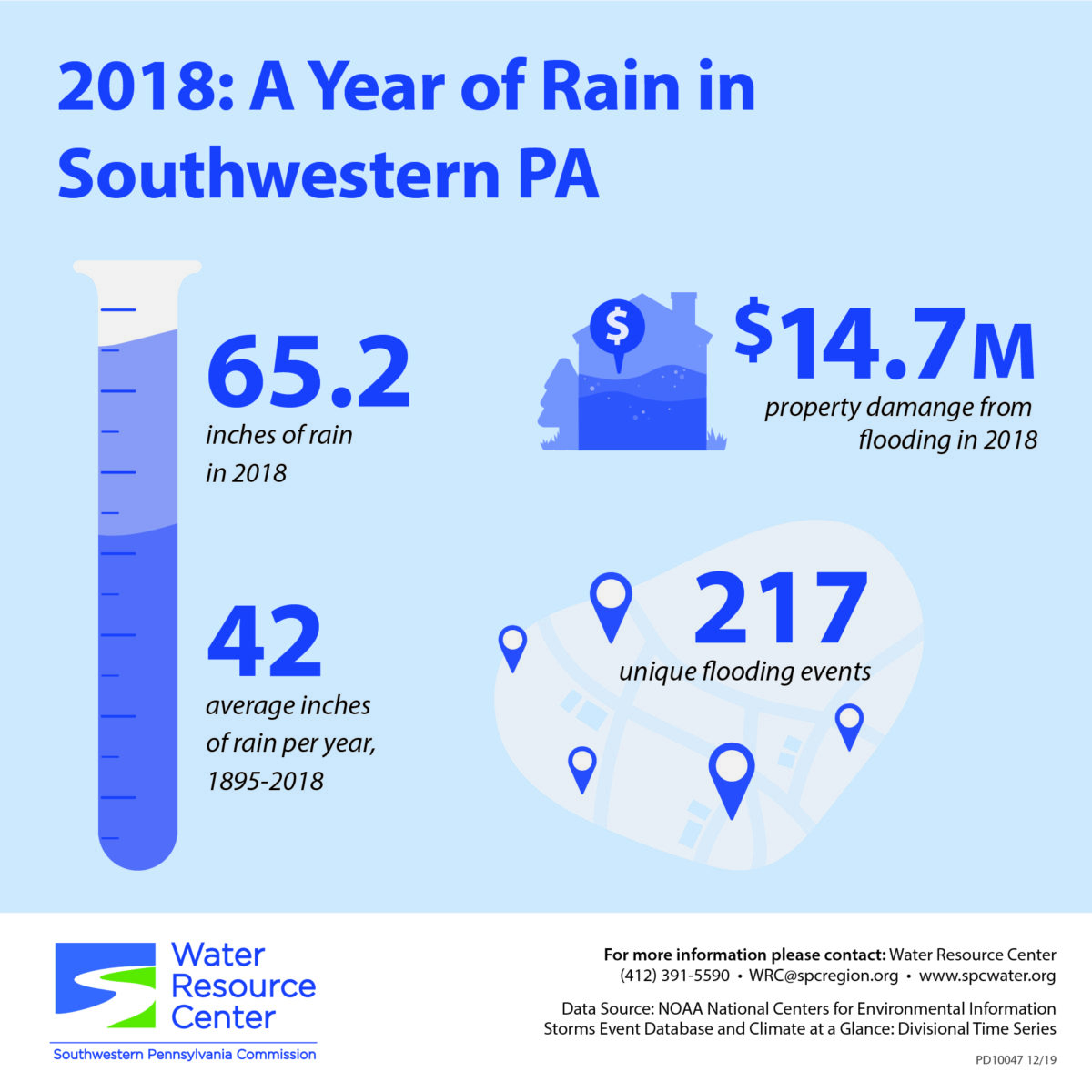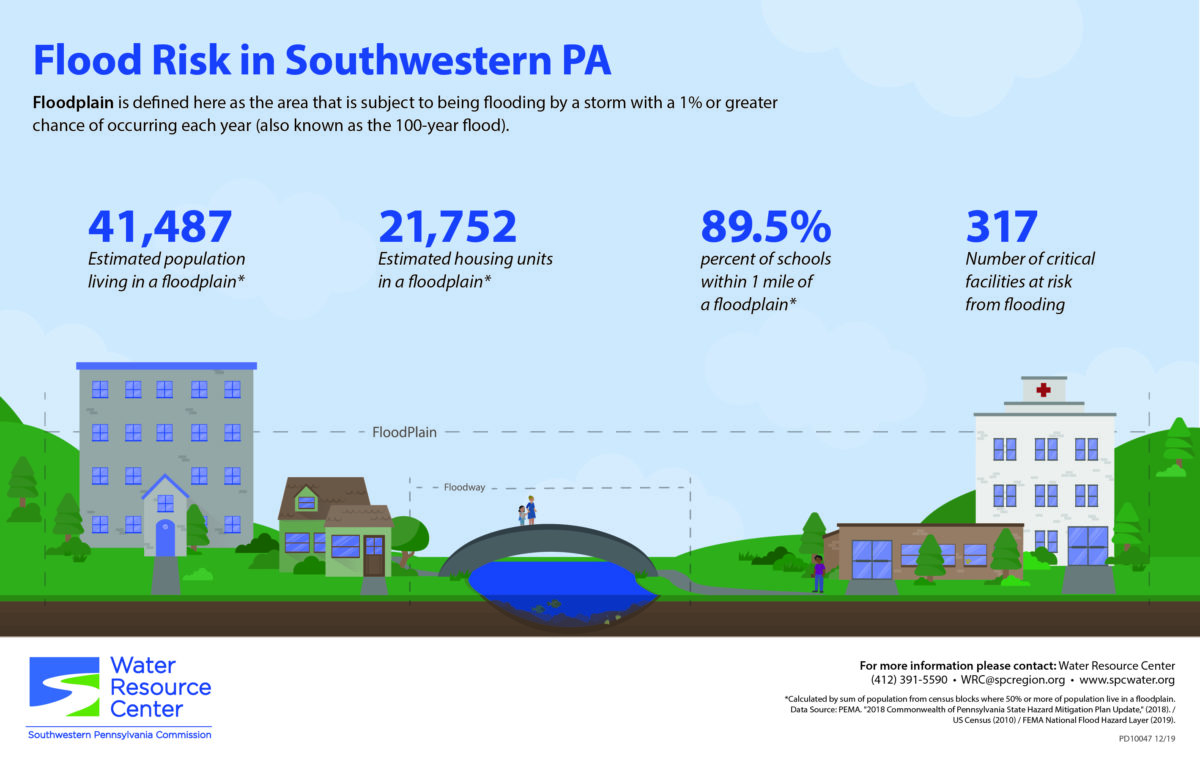Floodplain Management
What is a Floodplain?
A floodplain is the land that lies on either side of a river or stream that experiences flooding during high water events. A short video called “What is a Floodplain” provides a short explanation.
Value of Floodplains
Natural functions of floodplains can be divided into three categories: water resources, biologic resources, and societal resources (FEMA Emergency Management Institute Academic Emergency Management and Related Courses, Floodplain Management: Principles and Current Practices, Chapter 8). Water resources include natural flood and erosion control, surface water quality maintenance, and groundwater recharge. Biologic resources include biological productivity and fish and wildlife habitats. Societal resources include harvest of wild and cultivate products, recreational opportunities, and areas for scientific study and outdoor education. The most commonly discussed of these functions are providing flood storage, infiltration, and filtration of water. The publication Stream Processes: A Guide to Living in Harmony with Streams is an introductory guide providing information on how streams and their floodplains work together.
When left in a natural state or restored, floodplains can provide many benefits including but not limited to: managing water quantity by slowing and storing floodwaters; providing water quality benefits by reducing nonpoint source pollution; and assisting with groundwater recharge. Floodplains can also serve as valuable community assets such as parks, bike paths, open space, important wildlife and bird habitat, and other aesthetic features. A few of the additional value of floodplains are described in ASFPM’s white paper and USGS’s study.
Floodplain Management
Floodplain management is a decision-making process to increase resiliency by reducing flood damages and protecting natural function of floodplains. According to FEMA, floodplain management is “the operation of a community program of preventive and corrective measures to reduce the risk of current and future flooding, resulting in a more resilient community. These measures take a variety of forms, are carried out by multiple stakeholders with a vested interest in responsible floodplain management, and generally include requirements for zoning, subdivision or building, building codes and special-purpose floodplain ordinances.”
Floodplain management regulations in Pennsylvania are administered at the local level through ordinances. These ordinances intend to reduce damages associated with flooding and retain natural floodplain functions. FEMA’s model floodplain ordinance is available on our Local Regulations page.
Floodplain management requires that people work together to prevent and mitigate flooding damage including but not limited to federal/state/local employees, developers, realtors, emergency management, businesses, insurance agents, and residents. Floodplain management focuses on hazard mitigation to limit loss before it occurs. Becoming educated about flood prevention measures, implementing proper disaster procedures, developing ordinances that encourage flood-resilient development, enforcing local ordinances, and following state/federal regulations and mitigation measures can all be beneficial for your community. Find information on these topics on our Flooding Resources page. For more information on how to develop a community program, see the “Addressing your Communities Flood Problems: A Guide for Elected Officials” (FEMA, 1996) and our Community Rating System page.
Floodplain Restoration
When floodplains are restored to a nearly natural state, not only do they reduce severity of floods, but they also can help handle stormwater runoff and minimize nonpoint water pollution for far less money than it would take to build facilities to correct these problems. Floodplain restoration can be done with many techniques including but not limited to: grading banks to repair incised channels, re-vegetating banks, moving infrastructure out of the floodplain, setting levees back from the river, or installing in-stream structures to divert flows away from eroding banks. Find more information on benefits of floodplain restoration in American Rivers’ website, FEMA: Benefits of Natural Floodplains, the Naturally Resilient Communities tool.
Explore Flooding Resources and Tools


